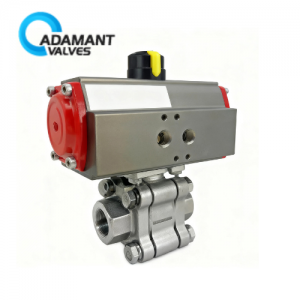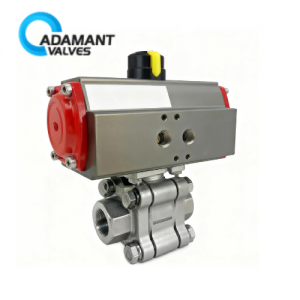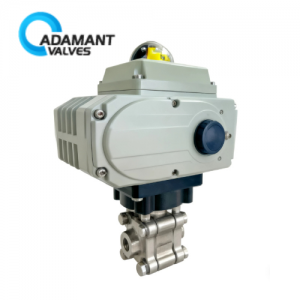The Beginner’s Guide to Check Valves
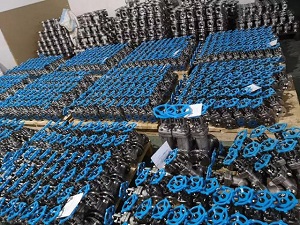
Check valves have many vital applications in both residential and industrial settings. A complete understanding of the different types of check valves and the applications for which they are suited is necessary for those who work in plumbing, HVAC installation and repair, machinists, auto mechanics, the DIY-minded homeowner, and many others.
This guide will explain how check valves work, identify the different types of check valves, and describe some of their more common uses.
Understanding How Check Valves Work
There are many types of check valves, but they all work as backflow preventers. They are designed to allow gases and liquids to flow easily in one direction but not at all in the opposite direction.
What is a check valve?
Check valves, also known as non-return valves and one-way valves, are simple devices. They serve one purpose: to keep fluids and gases flowing in only one direction within a system. They are used in applications where backflow may lead to contamination or pressure buildup.
Check valves may be tiny, like those used in HVAC or refrigeration applications, or immense, like those used in water or fuel processing plants. Large or small, they all work in the same fundamental way.
How does a check valve work?
Check valves are remarkably simple and ingenious in their function. They require no input from a human or computer to get the job done, and they do not need any outside power source.
The one-way check valve uses a pressure differential to open and close the valve when necessary. When the pressure behind the valve is higher than the pressure in front of it (a condition known as the cracking pressure), the valve opens and permits the flow of the contained fluid in the chosen direction. When the pressure behind the valve lessens, the valve closes to prevent what has already passed through it from flowing backward in the wrong direction.
Sometimes, check valves are placed in a series along a pipe, each with a slightly lower cracking pressure. This not only adds extra layers of protection from backflow, but the differences in pressure required to open the valves ensure that the liquid continues to flow forward, even if the valves in the rear have already closed.
What is a check valve used for?
Check valves are used anywhere backflow prevention is required. They have a very wide range of applications.
They can be found in sewage plants, where already purified liquids must be kept from contact with those that have not been purified.
They can be found in almost every pump, whether for industrial or household use. Sump pumps or bilge pumps are prime examples. Both are used to remove unwanted water from closed spaces, sometimes against gravity. Without water check valves, the water would flow right back into the area that requires draining.
Plumbing check valves are used in homes and businesses to ensure that sewage does not flow back into drains and toilets. Swimming pool check valves are used to keep the water flowing through the pool filtering system, maintaining water cleanliness and safety for swimmers using the pool.
If there is liquid or gas flowing, there is likely to be a check valve somewhere in the system. On the outside of pipes or tubes that contain a check valve, you will find a symbol alerting you to its presence.
The symbol will have an arrow to let you know which way the medium contained in the pipe should be flowing. In some cases, the symbol will also let you know what type of check valve is at work there.
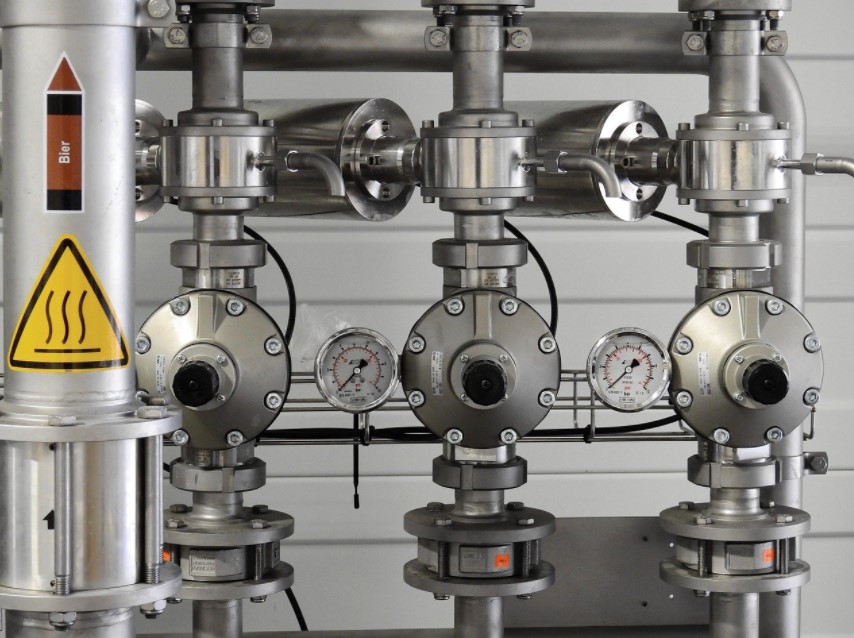
Check valve symbol (far left)
The difference between sanitary check valves and regular check valves
Sanitary check valves work in precisely the same way as regular check valves. They differ only in how they are manufactured and in the applications for which they are used. As the name implies, sanitary check valves are used in applications that require high levels of sanitation, like pharmaceutical processing plants, dairies, and other food processing plants.
What is a sanitary check valve?
A sanitary check valve is manufactured in a way that makes it easy to clean and sterilize. All sanitary valves must be made to facilitate clean-in-place procedures, meaning they can be cleaned effectively without being disassembled or removed from the pipeline. It is made using only non-porous materials that can stand up to the rigors of regular heat or chemical sanitizing. Rough edges, cracks, and crevices are not permitted.
The Most Important Types of Check Valves
Check valves are a critical part of many systems. For some systems, the check valve is necessary to prevent a buildup of pressure within the system. This can be seen in their uses in the pipelines that carry oil or natural gas. Backflow in these long, sealed pipes could cause pressure to build up within them, damage seals and joints along the pipeline, and lead to an explosion.
In other cases, check valves are used to prevent contamination. This can be seen in their use in wastewater treatment plants and dairies. In these cases, the water or milk flowing through the pipes is purified as it travels along the pipe. Backflow would not only lead to pressure buildup but would bring clean media into contact with unsanitized media.
Check valves are used in pumps to prevent the return of liquids to areas that are being drained or emptied and in air conditioners to ensure that the coolant circulates completely.
Because there are so many uses for the check valve, there are a great many types available. Each of them is designed to meet specific needs depending on the type of media flowing through them and the amount of pressure under which the medium will be flowing.
These are the most common types of check valves.
Swing check valve
Swing check valves are one of the most basic types. They consist of a disk and a hinge. When the pressure behind the disk builds up, the disk swings open on the hinge and allows liquid to flow through. When the pressure drops, the disk swings closed again. Swing check valves are used in many places, including sewage systems, water treatment plants, and household plumbing. The most familiar swing check valve is the one found in every toilet to allow the tank to fill without overfilling.
Piston check valve
Piston check valves, or lift valves, consisting of a disk that is fitted into grooves in the pipe and, sometimes, a spring. When pressure builds up under the disk, it is forced upward, coiling the spring. When the pressure drops, the spring uncoils, and the disk rapidly falls into place to create a seal again. These types of valves are used in many processing plants and to control the flow of cooling water in nuclear power plants.
Lift check valve
Lift check valve is simply another name for the piston check valve.
Ball check valve
Very similar in use to piston check valves, ball check valves consist of a weighted ball that sits in the valve to create a seal. When the pressure builds, the ball is lifted, and liquids can pass through the valve. When the pressure drops, the ball drops back into its spot, recreating a seal. It is used in many of the same applications as the piston valve, but it is better suited to thicker, heavier liquids.
Butterfly check valve
Butterfly check valves consist of two flaps positioned to revolve around a central hinge. When pressure is applied, these flaps rotate on the hinge to open; when the pressure is relieved, they rotate back. They are frequently found in home applications, like heaters and air conditioners, because they open and close quietly.
Dual plate check valve
As the name implies, dual plate check valves, also known as silent check valves, use two plates instead of one to prevent backflow. They consist of two plates mounted on a central hinge and a spring. When pressure is applied, the disks are forced open, and because of the springs, they close as soon as the pressure is reduced, without having to wait for backflow pressure to force them closed. Because pressure is not required to close these valves, they are often used for gases.
Stop check valve
Stop check valves are similar to piston or ball check valves except that they can be controlled. These flow check valves can be forced to open or close regardless of the pressure differential. Safe for use as fuel line check valves, these are often installed as safety measures at gas stations, and in oil rigs and fuel pipelines.
Tilting disk check valve
Tilting disk check valves consist of a disk that is mounted to a central pivot point. When pressure is applied, the disk pivots to open, allowing the medium to flow through freely. These types of full flow check valves are used most often with dry substances, like grains or animal feed, or for airflow regulation. They do not usually create a tight seal, so they are not recommended for applications where contamination is a potential problem.
Vacuum check valves
Vacuum check valves work in an opposite fashion to most check valves. Instead of opening to allow the flow of liquids or gases, this type of valve is used to suction air or liquids out of a closed system. They are largely used as part of the braking system for vehicles.
How to Choose the Right Check Valve for Your Application
Choosing the right check valve may seem like a daunting task, but it doesn’t have to be. Remember that each type of valve was created to suit a specific need. All you need is to understand what your check valve is required to do and for what medium you need inline check valve backflow prevention, and you narrow your choices significantly.
Choosing the Best Check Valve for You
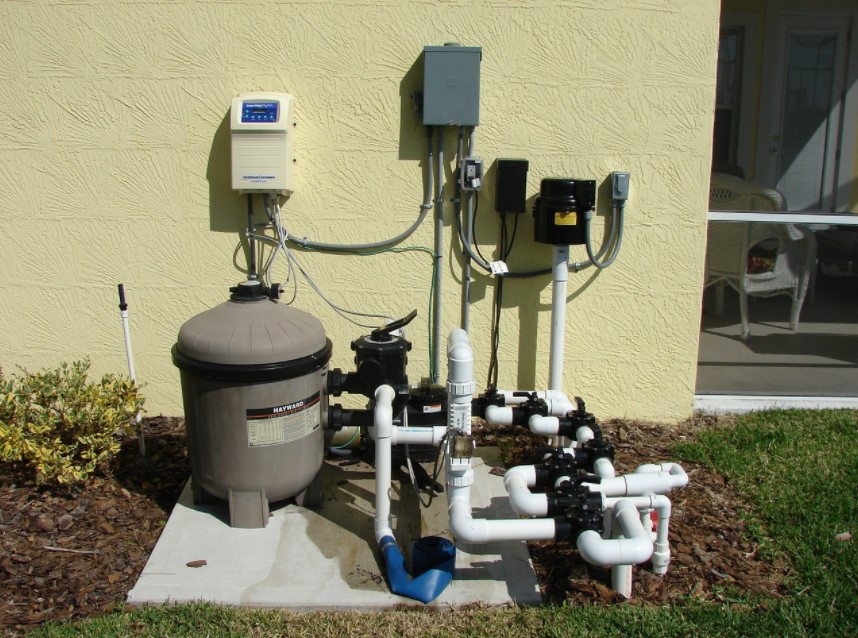
Example of pool check valves in use
Choosing the best type of check valve for you starts with knowing what you hope to accomplish by installing it. If you need to better regulate the flow of water to your pool filter, you will want a type that will work as a pool check valve. It must work with water but does not need to create a complete seal. A swing check valve may be your best choice in this case.
If you are in need of a sewer check valve, then you need one that does create a complete seal and does not need to be replaced very often. In this case, a ball or piston check valve may work best.
If you are handy with car repairs and are looking to fix or replace the braking system on your vehicle, then a vacuum check valve is what you need. If you have an air conditioner to repair, then an air compressor check valve should be on your shopping list.
Check Valve Replacement Cost
How much a replacement check valve costs depends on many factors. The size and type play a part as do the materials used in its construction.
How often should a check valve be replaced?
How often a check valve should be replaced is determined by how much wear and tear it receives. A check valve that faces a lot of pressure on a regular basis, such as those found in oil drilling operations, will wear out a great deal more quickly than those that face only weak pressure differentials.
Check valves that have a lot of debris passing through them will likely wear out faster than those stopping the backflow of clean water or air. Also, sanitary check valves will need to be replaced more often due to the damage done by frequent sanitation.
How much does it cost to replace a check valve?
The cost of replacing a check valve also varies a great deal. Replacing a PVC check valve will cost substantially less than replacing a brass check valve. A tiny check valve with micro-resistance designed to stop the backflow of coolant in a refrigerator will cost a lot less than one used in a massive bilge pump on a luxury liner.
The most important factors to consider when looking at the cost of your replacement check valve are whether it will accomplish the task for which you need it and whether the materials of which it is made will stand up to the rigors of the task for which it has been selected. A less expensive check valve that you have to replace in a few years may not be as cost-effective as a more expensive one that will last substantially longer.


